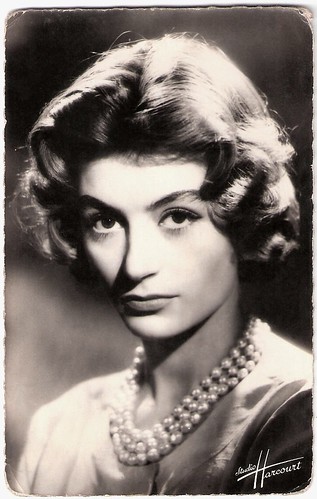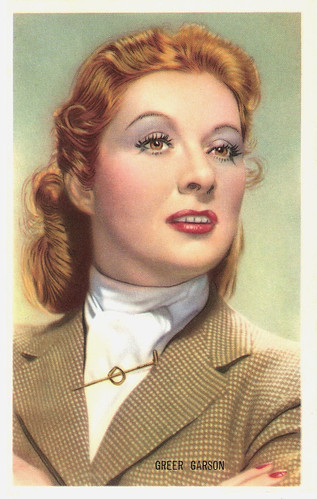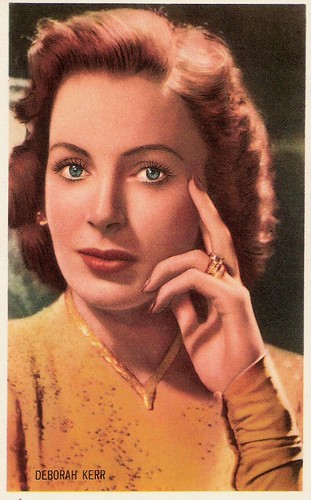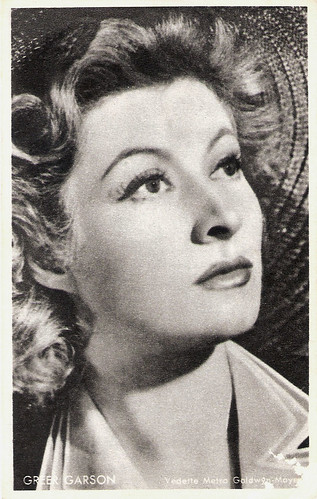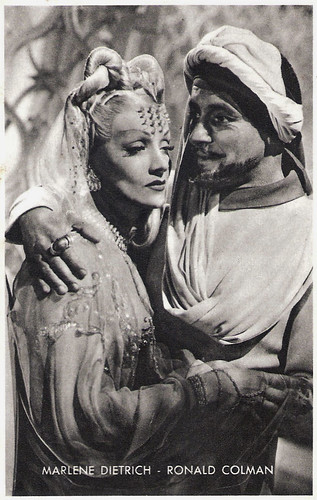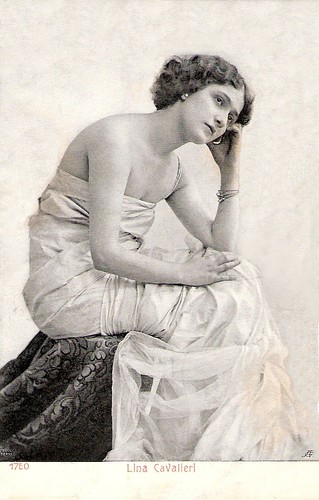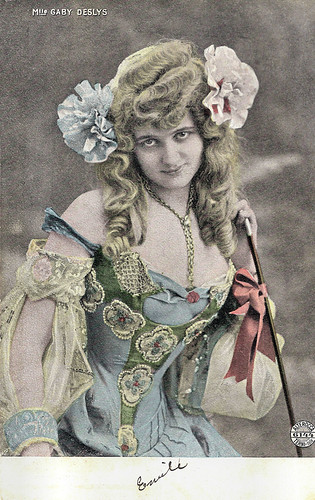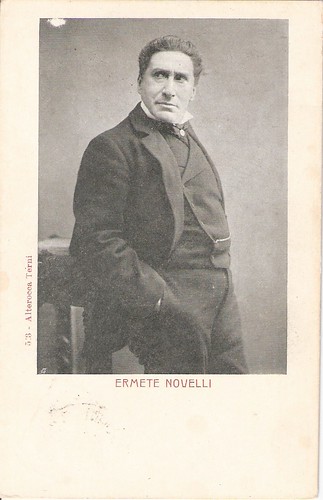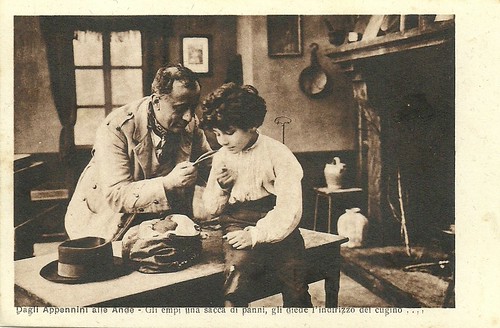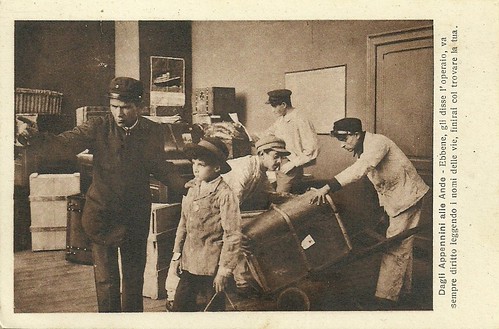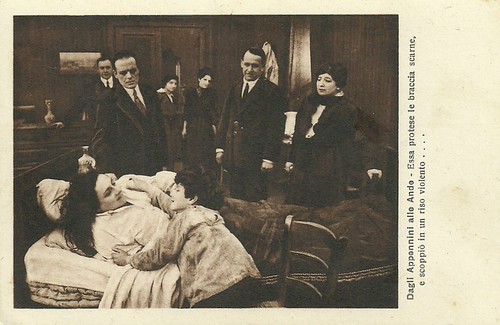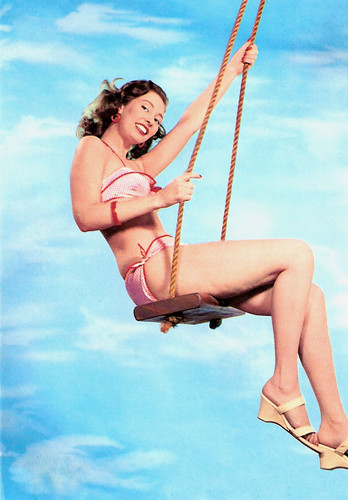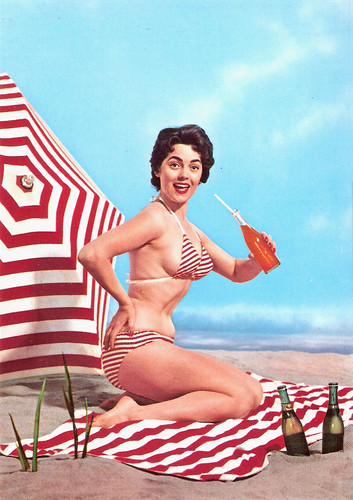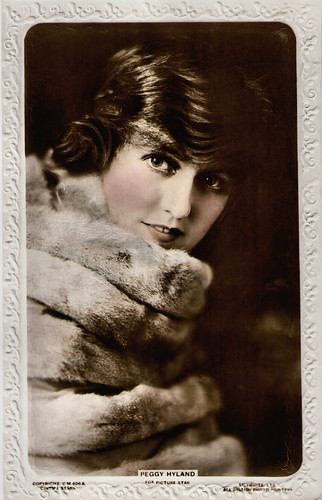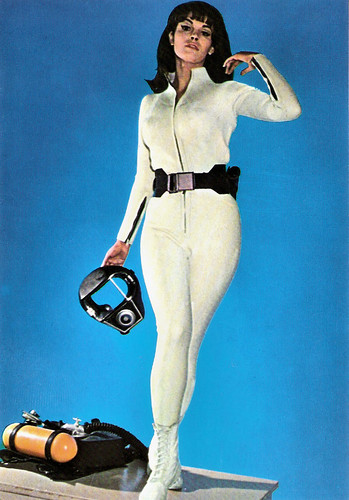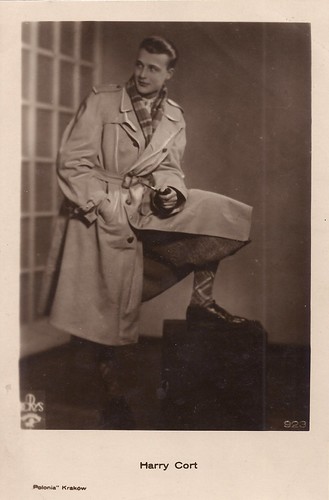The silent Italian film La cavalcata ardente/The fiery cavalcade (1925) was a highly successful historical melodrama about the conquest of Naples by Garibaldi. The film was a good example of the cooperation of the husband-and-wife-team of writer-director Carmine Gallone and Polish-born film diva Soava Gallone between 1916 and 1927.
![Soava Gallone in La cavalcata ardente]()
Italian postcard by Ed. G.B. Falci, Milano. Photo: Soava Gallone in La cavalcata ardente (1925).
![Soava Gallone in La cavalcata ardente]()
Italian postcard by G.B. Falci Editori, Milano. Photo: Soava Gallone in La cavalcata ardente (1925).
![Soava Gallone, Jeanne Brindeau and Gabriel de Gravone in La cavalcata ardente]()
Italian postcard by Ed. G.B. Falci, Milano. Photo: Jeanne Brindeau, Soava Gallone and Gabriel de Gravone in La cavalcata ardente (1925).
Carmine Gallone had the intelligence to pick films that fully sustained the image of Soava Gallone as a refined, delicate soul, and he limited her performances to no more than two per year.
In La cavalcata ardente Soava plays a beautiful aristocratic girl, who has to hide in a convent. The photography was by Alfredo Donelli and Emilio Guattari. The costumes were designed by French fashion designer Paul Poiret and the sets by Filippo Folchi.
Director Gallone wrote the script himself. The film had its premiere in the Supercinema (now Teatro Nazionale) in Rome in April 1925. In the audience were many of the old veterans of Giuseppe Garibaldi's volunteer army dressed in their shirts. The reviewer of the magazine L'epoca praised the combination of the love story and the historical background.
![Raimondo Van Riel in La cavalcata ardente]()
Italian postcard by Ed. G.B. Falci, Milano. Photo: Westi / S.A.I.C. Publicity still of Raimondo Van Riel as Il Brigante (The Bandit) in La cavalcata ardente (1925).
![La cavalcata ardente]()
Italian postcard by Ed. G.B. Falci, Milano. Photo: Raimondo Van Riel and Gabriel de Gravone in La cavalcata ardente (1925).
![Soava Gallone and Raimondo Van Riel in La cavalcata ardente]()
Italian postcard by Ed. G.B. Falci, Milano. Photo: Raimondo Van Riel and Soava Gallone in La cavalcata ardente (1925).
![Raimondo Van Riel, Soava Gallone & Gabriel de Gravone in La cavalcata ardente]()
Italian postcard by Ed. G.B. Falci, Milano. Photo: Raimondo Van Riel,Soava Gallone and Gabriel de Gravone in La cavalcata ardente (1925).
![Soava Gallone and Jeanne Brindeau in La cavalcata ardente]()
Italian postcard by Ed. G.B. Falci, Milano. Photo: Jeanne Brindeau and Soava Gallone in La cavalcata ardente (1925).
![Gabriel de Gravone & Jeanne Brindeau in La cavalcata ardente]()
Italian postcard by Ed. G.B. Falci, Milano. Photo: Jeanne Brindeau and Gabriel de Gravone in La cavalcata ardente (1925).
![Gabriel de Gravone in La cavalcata ardente]()
Italian postcard by Ed. G.B. Falci, Milano. Photo: Gabriel de Gravone in La cavalcata ardente (1925).
![Soava Gallone]()
Italian postcard by Ed. G.B. Falci, Milano. Photo: Soava Gallone in La cavalcata ardente (1925).
La cavalcata ardente is a melodrama set against the background of the conquest of Naples by Giuseppe Garibaldi's volunteers in 1860.
Soava Gallone plays Grazia di Montechiaro, an aristocratic who is forced into a marriage with the old prince of Santafè (Emilio Ghione). She is secretly in love with a patriot (Gabriel de Gravone).
Masked, the lover leads a cavalry to save the girl during the betrothal party (hence the fiery cavalcade of the title). This leads to the girl hiding in a convent and the lover reaching for the troupes of Garibaldi. He is arrested, however, and the girl can only save his life by accepting marriage with the old prince.
However, she is saved for a second time, as Garibaldi’s troupes just in time reach Naples and the old prince dies in the following battle. At the end the two lovers are finally reunited.
![Emilio Ghione in La cavalcata ardente]()
Italian postcard by Ed. G.B. Falci, Milano. Photo: Westi / S.A.I.C. Publicity still of Emilio Ghione as the Prince of Santafé in La cavalcata ardente (1925).
![Soava Gallone and Emilio Ghione in La cavalcata ardente]()
Italian postcard by Ed. G.B. Falci, Milano, no 312. Photo: Soava Gallone and Emilio Ghione in La cavalcata ardente (1925).
![Soava Gallone and Emilio Ghione in La cavalcata ardente]()
Italian postcard by Ed. G.B. Falci, Milano. Photo: Westi / S.A.I.C. Publicity still of Soava Gallone and Emilio Ghione in La cavalcata ardente (1925).
![Soava Gallone and Emilio Ghione in La cavalcata ardente]()
Italian postcard by Ed. G.B. Falci, Milano. Photo: Westi / S.A.I.C. Publicity still of Soava Gallone and Emilio Ghione in La cavalcata ardente (1925). Caption: "The death of Santafé."
![Soava Gallone and Gabriel de Gravone in La cavalcata ardente]()
Italian postcard by Ed. G.B. Falci, Milano, no 318. Photo: Soava Gallone and Gabriel de Gravone in La cavalcata ardente (1925).
![Soava Gallone in La cavalcata ardente]()
Italian postcard by Ed. G.B. Falci, Milano. Photo of Soava Gallone in La cavalcata ardente (1925).
![La cavalcata ardente]()
Italian postcard by Ed. G.B. Falci, Milano. Photo: Raimondo Van Riel,Soava Gallone and Gabriel de Gravone in La cavalcata ardente (1925).
![La cavalcata ardente]()
Italian postcard by Ed. G.B. Falci, Milano. Photo: Raimondo Van Riel, and Gabriel de Gravone in La cavalcata ardente (1925).
Sources: Vittorio Martinelli (Le dive del silenzio), Vittorio Martinelli (Il cinema muto italiano), Wikipedia (Italian) and IMDb.

Italian postcard by Ed. G.B. Falci, Milano. Photo: Soava Gallone in La cavalcata ardente (1925).

Italian postcard by G.B. Falci Editori, Milano. Photo: Soava Gallone in La cavalcata ardente (1925).

Italian postcard by Ed. G.B. Falci, Milano. Photo: Jeanne Brindeau, Soava Gallone and Gabriel de Gravone in La cavalcata ardente (1925).
A Refined, Delicate Soul
Carmine Gallone had the intelligence to pick films that fully sustained the image of Soava Gallone as a refined, delicate soul, and he limited her performances to no more than two per year.
In La cavalcata ardente Soava plays a beautiful aristocratic girl, who has to hide in a convent. The photography was by Alfredo Donelli and Emilio Guattari. The costumes were designed by French fashion designer Paul Poiret and the sets by Filippo Folchi.
Director Gallone wrote the script himself. The film had its premiere in the Supercinema (now Teatro Nazionale) in Rome in April 1925. In the audience were many of the old veterans of Giuseppe Garibaldi's volunteer army dressed in their shirts. The reviewer of the magazine L'epoca praised the combination of the love story and the historical background.

Italian postcard by Ed. G.B. Falci, Milano. Photo: Westi / S.A.I.C. Publicity still of Raimondo Van Riel as Il Brigante (The Bandit) in La cavalcata ardente (1925).

Italian postcard by Ed. G.B. Falci, Milano. Photo: Raimondo Van Riel and Gabriel de Gravone in La cavalcata ardente (1925).

Italian postcard by Ed. G.B. Falci, Milano. Photo: Raimondo Van Riel and Soava Gallone in La cavalcata ardente (1925).
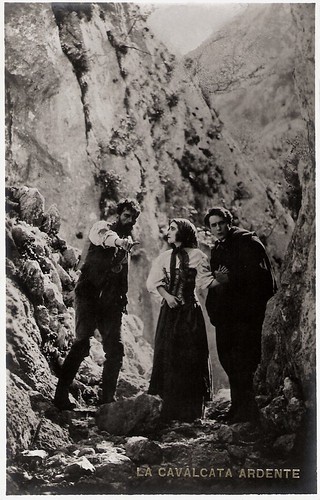
Italian postcard by Ed. G.B. Falci, Milano. Photo: Raimondo Van Riel,Soava Gallone and Gabriel de Gravone in La cavalcata ardente (1925).

Italian postcard by Ed. G.B. Falci, Milano. Photo: Jeanne Brindeau and Soava Gallone in La cavalcata ardente (1925).

Italian postcard by Ed. G.B. Falci, Milano. Photo: Jeanne Brindeau and Gabriel de Gravone in La cavalcata ardente (1925).

Italian postcard by Ed. G.B. Falci, Milano. Photo: Gabriel de Gravone in La cavalcata ardente (1925).

Italian postcard by Ed. G.B. Falci, Milano. Photo: Soava Gallone in La cavalcata ardente (1925).
Secretly in Love
La cavalcata ardente is a melodrama set against the background of the conquest of Naples by Giuseppe Garibaldi's volunteers in 1860.
Soava Gallone plays Grazia di Montechiaro, an aristocratic who is forced into a marriage with the old prince of Santafè (Emilio Ghione). She is secretly in love with a patriot (Gabriel de Gravone).
Masked, the lover leads a cavalry to save the girl during the betrothal party (hence the fiery cavalcade of the title). This leads to the girl hiding in a convent and the lover reaching for the troupes of Garibaldi. He is arrested, however, and the girl can only save his life by accepting marriage with the old prince.
However, she is saved for a second time, as Garibaldi’s troupes just in time reach Naples and the old prince dies in the following battle. At the end the two lovers are finally reunited.

Italian postcard by Ed. G.B. Falci, Milano. Photo: Westi / S.A.I.C. Publicity still of Emilio Ghione as the Prince of Santafé in La cavalcata ardente (1925).

Italian postcard by Ed. G.B. Falci, Milano, no 312. Photo: Soava Gallone and Emilio Ghione in La cavalcata ardente (1925).

Italian postcard by Ed. G.B. Falci, Milano. Photo: Westi / S.A.I.C. Publicity still of Soava Gallone and Emilio Ghione in La cavalcata ardente (1925).

Italian postcard by Ed. G.B. Falci, Milano. Photo: Westi / S.A.I.C. Publicity still of Soava Gallone and Emilio Ghione in La cavalcata ardente (1925). Caption: "The death of Santafé."

Italian postcard by Ed. G.B. Falci, Milano, no 318. Photo: Soava Gallone and Gabriel de Gravone in La cavalcata ardente (1925).

Italian postcard by Ed. G.B. Falci, Milano. Photo of Soava Gallone in La cavalcata ardente (1925).

Italian postcard by Ed. G.B. Falci, Milano. Photo: Raimondo Van Riel,Soava Gallone and Gabriel de Gravone in La cavalcata ardente (1925).

Italian postcard by Ed. G.B. Falci, Milano. Photo: Raimondo Van Riel, and Gabriel de Gravone in La cavalcata ardente (1925).
Sources: Vittorio Martinelli (Le dive del silenzio), Vittorio Martinelli (Il cinema muto italiano), Wikipedia (Italian) and IMDb.










